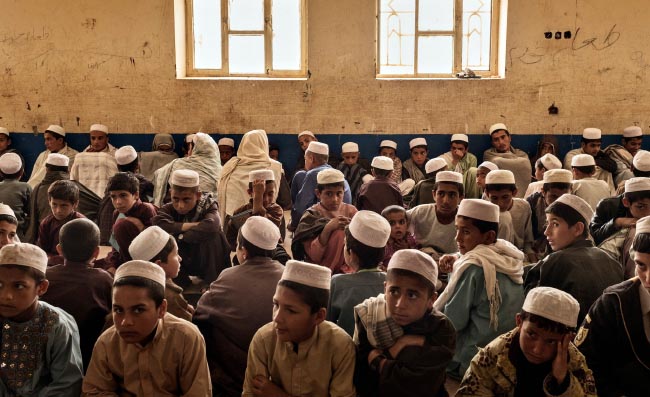The social basis of radicalism and tendency towards it have been ignored or paid less attention in the process of combating terrorism or Islamophobia. It is likely that the social ground is one of the main reasons behind the growing radicalism in the Islamic developing countries, including Afghanistan. States had played its role unintentionally in constituting the grounds. In other words, states smooth the path for disorder which triggers radical reaction. So, in addition to military deal, negotiation and diplomatic struggles, finding out the social bases of radicalism and adopting practical strategies must be considered by governments. This commentary is the outcome of a research about the groups ready to join Islamic radicals. The commentary has been supported by the sociological ideas of Karl Marx, Max Weber, Emil Durkheim and Burger – who believe that social and economic deprivation spark off tendency towards religious radical beliefs. Similarly, Ericsson’s psychological view will be useful in analyzing some layers in favor of radicalism. Hrair Dekmejian, a prominent researcher in the arena of radicalism in the Middle East, has discovered five social groups inclined to succumb to radical temptations. Discovering such groups and the reasons behind their tendency will change the general outlook about combating terrorism.
1- Youths
Youths are the most vulnerable group to radicalism. The youths’ mental and spiritual states on the one hand, and their education and social-economic status on the other hand will lead to revolutionary and sensational movements. For example, the educated youths who studied educational and technical fields such as medical, math, engineering and also primary seminary students, unlike those who studied human science, will be more susceptible to radicalism. Because purity, certainty and fundamentalism lie in the nature of medical and technical science, whereas social science has analytical and intellectual nature and it is more flexible and skeptical. Additionally, identity crisis, unemployment and social inequalities will prompt the youths to join radical groups. Exploiting the genuine intention of this social class, terrorist networks mobilize them against the so-called west-oriented states.
2- New Urban Elements
The uncontrolled process of emigration from village to city is one of the factors of instability in the developing countries, including Afghanistan. This trend, which is associated with population density in large cities such as Kabul, will be considered rural-making rather than urbanization. The villagers are usually settled in suburbs, where facilities are lacking, without being integrated into urban culture. This will lead to cultural crisis and mental restlessness among the people and leave them at the mercy of radicalism. Realizing the social and mental conditions, radical groups will seek to attract these individuals.
3- Dissidents
This social group consists of most aware individuals that involve in conflict for being against the mechanism of power-sharing and foreign affairs. The political dissidents are ethnic nationalists and monopolists pushed to armed campaigns by the spirit of their totalitarianism. To legitimize their terrorist activities, this faction will resort to Islamic slogans veiled in religious fundamentalism. Members of Khalq Party who joined the Taliban in 1990s and Iraqi Baathists who initially joined al-Qaeda and then the Islamic State (IS) after the fall of Saddam’s regime are the clear examples. They are engaged in horror and terror under the mask of Jihad and Islam.
4- Traditional-Native Elements
The micro-bourgeoisie, bureaucrats, traders and instructors will be the fourth social group vulnerable to radicalism. This group will feel that their traditional beliefs have been weakened by cultural invasion and western values. This group deems foreign individuals and states a serious menace to their religious and traditional identity and has strong potential for being attracted to radical parties. Of course, more urban part of this class will suffer less human casualties for supporting radicalism through financial and spiritual aids.
5- The Lower Class of Society
Poor peasants, the urban poor and the residents of tribal belts are the three main parts of lower class. According to Marx, this class will be inclined to resort to revolutionary acts against the society’s wealthy and ruling class. Promising them happiness in the world and in the hereafter, terrorist networks are able to mobilize them. The lower class, which is a cheap force, will be subject to radicals. The tribal men and poor farmers act as amateur soldiers for terrorist groups by being paid small amount – this fact is proved in our country.
Considering the above analysis about the categorization and grounds and tendency for radicalization, political strategy for discovering the social hotbed of terror should be implemented to reduce their tendency in this respect. This strategy will be implemented in a violence-free process and make the challenge of radicalism manageable. I believe that the challenge before Afghanistan is stronger in persuading the minds of our youths, new urban elements, dissidents, traditional-native elements and the lower class rather than challenge in combating terrorism. Producing and deepening the discourse of moderate Islam compatible with modern civilization on the basis of religious principles, the process of urbanization, the systematic mechanisms of legal power-sharing, fighting corruption, and bridging the wide gap in the system of income will be the significant solutions in this regard.
Home » Opinion » The Social Bases of Radicalism
The Social Bases of Radicalism
| Mohammad Qasim Erfani

